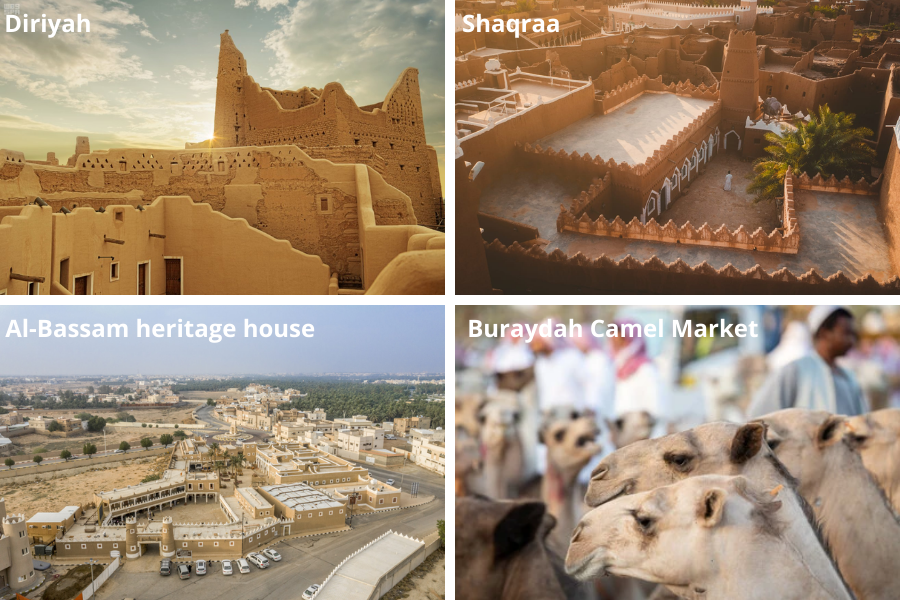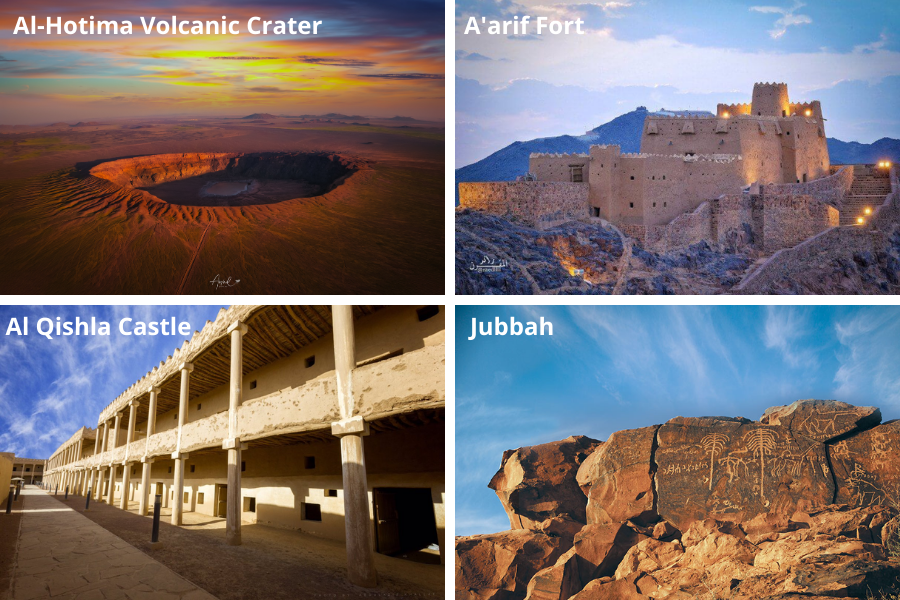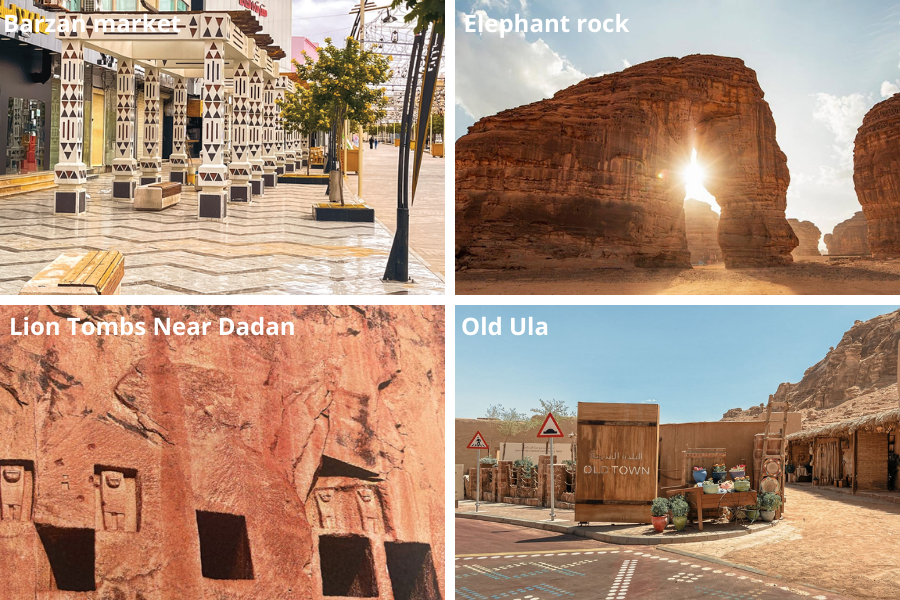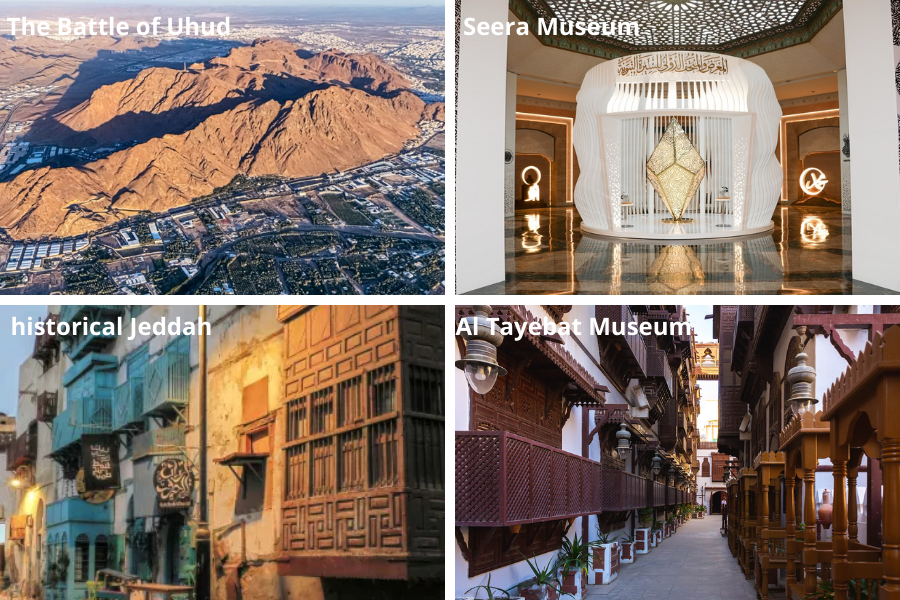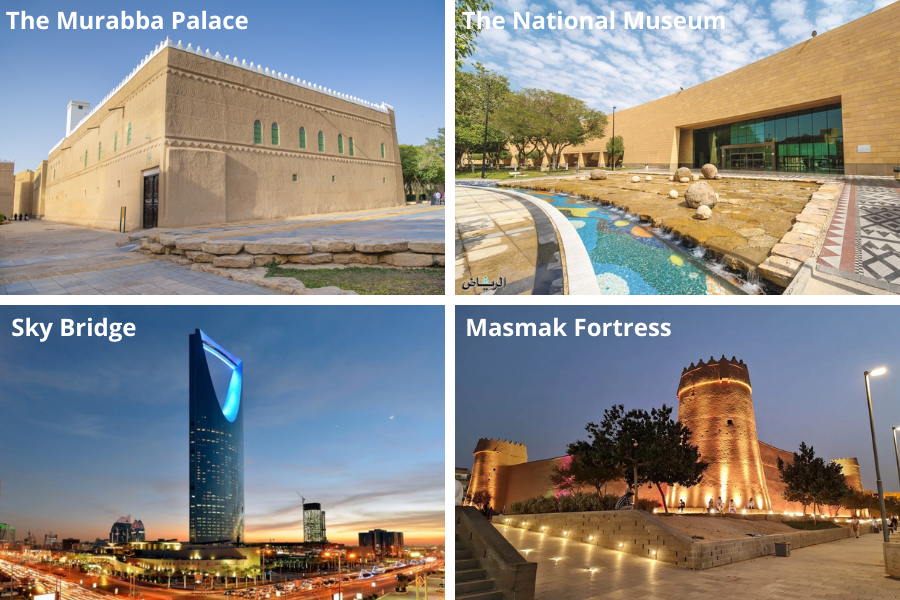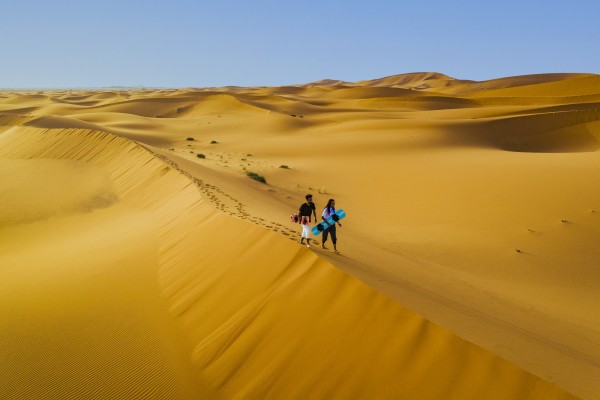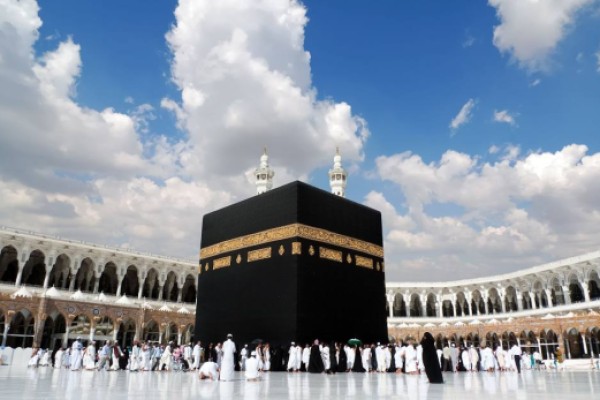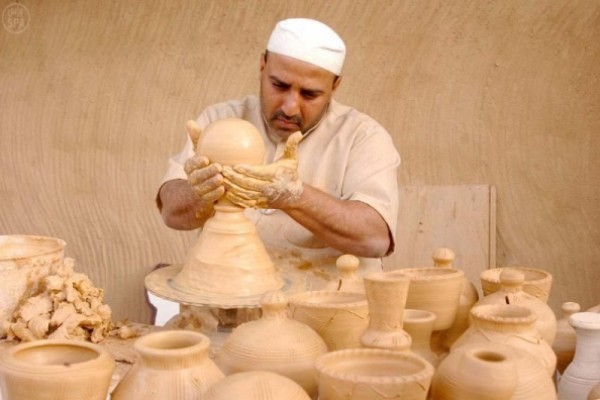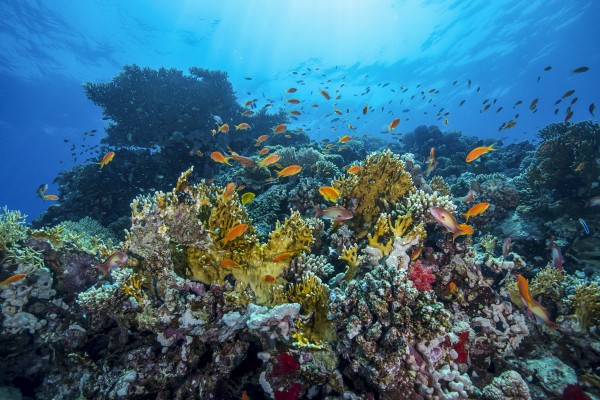Winter tour
(8 days) perfect for winter
| 9 Days | Max People : 20 |
| Min Age : 12+ |
Detail
Places to visit
The Murabba Palace
also known as Qasr al Murabba. It served as the residence and court of King Abdul Aziz, the founder of modern Saudi Arabia.
The National Museum
help to explore centuries of Arabian prehistory, history within striking modernist architecture and flower-wreathed gardens. It's eight halls exhibits everything from Neolithic rock art, to replicas of the buildings of old Jeddah, as well as transporting visitors on a magically interactive tour of the ages.
Sky Bridge
is the sixth tallest skyscraper in Saudi Arabia. Completed in 2002, this 99-storey building rises 302.3 meters in the sky and overtook Faisaliyah Tower as the tallest tower in Saudi Arabia, however, it has since been surpassed by five other buildings but remains the most iconic building in the Riyadh skyline.
Masmak Fortress
built in 1865 during the Second Saudi State, the fortress was given the name Masmak, the Arabic word for a tall, strong building with thick walls. It was the main base for the defense of Riyadh. When AL Rasheed family took control, the Saud Family were forced to flee into exile in Kuwait. There they remained until 1902.Abdul Rahman Al-Saud arrived in Riyadh accompanied by 63 men. He told 23 of them to wait at the border in case the mission failed, then entered the capital where he recapture the fortress and with it Riyadh.
Diriyah
was the former residence of the Saudi Arabia royal family (1727- 1818) and is one of top-notch tourist places in Riyadh. Explore the whimsical essence of Riyadh at this enthralling desert village which is also a panoramic UNESCO heritage site. Upon entering tourists will walk through cobbled narrow pathways lined with verdant lancing palm trees rendering a picture-perfect backdrop for photography
Shaqraa
It is a Saudi governorate, located 180 km north of Riyadh, the largest city in Al- Yamamah state. Was a stopping point on the Riyadh-Taif road before the opening of the new road. Was formed before the advent of Islam. It suffered from the war of the Turks against Bin Saud in the year 1818, when Shaqra people were known for the support of Imam. The Emir of Shaqra, Hamad bin Ghayhab, ordered the people of Shaqra to dig a deep trench around their city. And they built a wall on the edge of it. When Shaqra was surrounded by Turkish artillery, its people went up to ambushes from which the Turks were attacked from the walls, which made it difficult for the Turks to advance. The fighting intensified and they could not resist anymore, so the people of Shaqra demanded a truce. It was agreed that the Turks would not enter the city and Shaqra would be secured - provided that the Turks would not be attacked from behind when they advance and that the people would submit to Turkish rule.
Unaizah
is the second largest city in Al- Qassim Province. Was an important stopping point for Muslim pilgrims coming from Mesopotamia (Iraq) and Persia (Iran) to Makkah. Was inhabited hundreds of years before the spread of Islam.
Al-Bassam heritage house
a grand building was built in 1955 using traditional Najdi ventilation and lighting techniques. It covers an area of 3,500 square meters. It's a historical palace including museum and souk. Features 30 rooms spread across two floors, including guestrooms, storage rooms and bedrooms.
Buraydah Camel Market
Historically, camels were the main source of transport in Saudi Arabia. Now, being far more technologically advanced, Saudis value the camel, both for its place in the country's cultural past, but also as a thoroughbred racing animal, as well as a reliable source of milk, food and leather. in the outskirts of Buraydah, across two square miles, lies the largest camel market in the world. Every day at six in the morning, the Buraydah camel market comes to life as vendors and buyers exchange riyals for camels, sheep, goats, and goods such as saddles, halters and blankets. The markets are pure chaos, with thousands of camels rattling in their rusty pens, men from all over hoisting their purchases into the back of their pick-up trucks, and the screams of animals mixed with sand, heat, and smell! Most of the camels purchased at the Buraydah market are destined for the slaughter-house, as camel meat is a prized delicacy. At special auctions a thoroughbred camel can be sold for as much as a million dollars.
Al-Hotima Volcanic Crater
is the crater of an old volcano. still retains many of its natural and original components and its floor is a salt layer that gives the viewer a beautiful view.
This crater is located 7 km east of the city of Taba in the Hail region. This beautiful site is considered one of the tourist attractions in the region.
A'arif Fort
is located in the city of Hail on the highest peak of a mountain overlooking the city. Was built in 1260 AH on an area of 440 sq. m.A'arif Fort with its rectangular shape and medium size, is surrounded by a solid wall with openings to drain rainwater. Its walls were built of mud bricks and mud, on stone foundations, and equipped with everything the anchors and city defenders need, such as towers, observation slots, sleeping areas and others for storage, a mosque, toilets, and 30 watchtowers to defend the area. For a period of time, the castle was used to observe moon phases during Ramadan and holidays.
Al Qishla Castle
is located in the city of Hail. Was built by order of His Majesty King Abdulaziz in 1360 AH. Consists of a rectangular structure extending longitudinally from east to west and in width from north to south. It has two floors, an open courtyard, and a square tower in each of its four corners as well a main entrance on the eastern façade and a secondary one on the southern façade. The castle was built to serve as a military barracks besides a rectangular mosque containing three rows of connected columns.
Jubbah
the heritage city of Jubbah in the Hail region is one of the most important heritage sites and beautiful desert tourist destinations. Registered in 2015 as a World Heritage Site. The city of Jubbah includes the remains of the oldest human sites dating back to the stone ages. Perhaps one of the most important rock drawings and inscriptions that a tourist cansee in Jubbah are those found in Mount "Umm Sinman" and Mount "Ghouta", whichrepresent the early pattern of engraving dating back to the seventh millennium BC.The archaeological mountain "Umm Sinman" is characterized by many inscriptions and drawings, Thamudic and Stone Age, which are spread on the mountain. It is called by this name because it is very similar to the two-humped camel and is stable in the ground. The mountain recorded about (5431) Thamudic inscriptions, and (1944) a drawing of different animals. Including (1378) drawings of camels in different sizes and shapes, and the number of human drawings reached (262) drawings, and this huge number of these works confirms to those who watch them that the one who executed them was not a transient human being, but rather a human being who possesses many of the elements of civilization. The drawings and engravings of Umm Sinman Mountain and Ghouta Mountain are also distinguished by rich scenes of the daily life of humans andtheliving creatures that inhabited this area.And the emergence of animal figures such as camels, undomesticated horses, ibex, and various groups of sheep, cats and dogs that were used in hunting, while the second period dates back to the prominent drawings and rock inscriptions are the domestication of camels. In addition to symbolic shapes and palm trees.
Barzan market
despite the oldness of the Barzan market, it is not considered one of the bazaar markets. The market Displays merchandise including children's clothing, perfumes, cosmetics, food products, as well as perfumery products, furniture, and shops selling household utensils.
Elephant rock
the "trunk" and "body" of this monolithic red sandstone beast were shaped by natural forces millions of years of wind and water erosion. The beauty of the unrefined structure is enhanced by a landscape of golden sands.
Lion Tombs Near Dadan
Dadan was the capital city of the Lihyan and Dadan kingdoms. These civilizations flourished 2000 years ago. The Lihyan kingdom was among the biggest of its time, and it was spread from Madinah in the south to Aqaba in the north (Jordan). dadan was an ancient city currently located near Al-Ula. Dadan is widely known for its stunning tombs carved into red rocks. Lion tombs of Dadan are the most famous among all other tombs present in the region. These beautifully carved structures are 50 meters high. Historically the city had considerable importance in terms of trade as it was located on a major trading route. It acted as a crucial link between the southern region of theArabian Peninsula and several Persia, Egypt, and Mesopotamia empires. Being at the center of a significant trading route, the city was influenced by cultures of other lands. The essence of it can be seen in statues, the way buildings were constructed, and the tombs. Language from the script known as Minaic, which was brought in by people traveling to the city.
Old Ula
dating back to the 12th century, the heritage site is best known for its mud- brick buildings and being an age-old settlement on the pilgrimage route from Damascus to Makkah. Al Ula Old Town was inhabited from the 12th century until the 1980s, when its last residents left the ancient village for more modern locales. With nearly 900 houses, 400 shops and five town squares, the Old Town is once again welcoming travelers. It contains Masjid Al-Izam, the restored Friday mosque believed to have been visited by the Prophet Mohammed. Travelers can also see the which served as the main way residents tracked the change of seasons. Sira Museum (International Museum of the Prophet's Biography:It is concerned with a comprehensive civilized definition of the Prophet, peace be upon him, his noble manners, his great morals, and his tolerant law, with a distinguished scientific approach, solid research rooting, unique technical innovation, and innovative creative presentation, through the latest means and techniques, under the supervision of the Muslim World League.
The Battle of Uhud
The Battle of Uhud is a battle that took place between Muslims and the Quraish tribe in the third year of migration. The Muslim army was led by the Prophet Muhammad, and the Quraish tribe was led by Abu Sufyan bin Harb. The Battle of Uhud is the second major battle undertaken by Muslims. It occurred on the mount of Uhud.
Seera Museum
The Seera Museum in Al Madinah typically is a historical museum dedicated to showcasing the rich past of Medina, the second holiest city in Islam. It houses a collection of artifacts, models, and exhibits that illustrate the city's evolution from its pre-Islamic origins to its emergence as a significant center of Islamic civilization.
Historical Jeddah
Before naming it as the royal seaport for Makkah at 657 AD, Al-Balad site, “Historic Jeddah”, was built on beautiful coastal land. It gathered people from all cultures and walks of life throughout the ages. This part of the world unveils a human heritage whose walls challenged different historical factors with eight gates; each is known for its historical stories. In addition, it holds more than 10 ancient houses praised for their distinctive designs and the names of their ancient families. Here, you will get the coziest photographs.
Al Tayebat Museum
the building of the museum comprises numerous structural elements, all of which are associated with traditional Hejazi architectural styles. Al Tayebat City Museum is now renowned collection of pre-Islamic artifacts. There is a wonderful tiny mosque inside the premises that is a piece of art in itself. Tourists can purchase souvenirs from one of many antique stores that four levels and about 300 rooms with various history. It features centuries-old oil paintings, rock sculptures, embroideries, traditional Arabic clothing, ceramics, etc.
Price Includes
- All Fees and Taxes
- Private transportation
- Accommodation
- Hospitality & Snacks
- Tour guide (English)
- pick up airport and drop of
- Food and beverage
Price excludes
- International Flights Tickets
- Visa
Itinerary
Day 1 / Riyadh
- on arrival at Riyadh International Airport. Once complete the immigration and customs formalities meet your Hamza Camel Tours representative in the arrival's hall
- visit the National Museum
- visit to Al Morabba Palace
lunch at Najdya village restaurant -
visit king Fahad National library -
visit the landmark Kingdom Centre -
dinner at a local restaurant -
- go to the hotel for rest and overnight sleep
Day 2 : Riyadh
- breakfast in the hotel.
- visit Al Masmak Fortress
- lunch at Nori restaurant
- visit KAFD
- visit Diriyah
- dinner at Sharaq restaurant
- go to the hotel for rest and overnight sleep
Day 3 : Shaqra
- breakfast in the hotel
- drive to Historical Shaqra City
- lunch at Local restaurant
- move towards Onaiza
- visit Al Bassam heritage museum and Al Maskof Souq (Market)
- move to Al Malfa resort in Onaiza to have dinner and overnight sleep
Day 4 / Buraida, Volcano Crater and Hael
- breakfast at the resort.
- move to Buraida to visit the biggest camel markets in the middle east
- move towards Hail
- lunch at a local restaurant
- reaching Hotaima Crater close to Taba village. Enjoy hiking around its craters which takes about 70 minutes
- continue moving towards Hail
- move to the heritage restaurant for dinner
- go to hotel for overnight sleep
Day 5 / Jubbah and Hail
- breakfast at the hotel.
- pass by Al A'arif Forts.
- move to Jubbah town, to enjoy the historical inscriptions.
- lunch at Authentic Farm in Jubba.
- move back to Hail
- dinner at Marsai restaurant.
- back to the hotel to sleep overnight
Day 6 / from Hail to AlUla
- breakfast at the hotel.
- move towards Al Ula.
- lunch in a local restaurant in the road.
- reach Hegra site and enjoy the Nabatean Civilization.
- visit Elephant rock to enjoy the scenery and meditation.
- dinner at local restaurant
- go to resrot for overnight sleep.
Day 6 / AlUla
- breakfast at the hotel.
- using 4 * 4 cars for Safari tour includes Arch Mountain, Nabatean archeological Sites and Shalal resort.
- hike for 70 minutes from Dadan site to Historical Ula, enjoying passing between Palm tree farms.
- lunch at the Nakheel restaurant in Old Ula.
- enjoy Old Ula exploring and climb to Mosab Fort
- back to the resort for diner and overnight sleep
Day 7 / AL Aula to Madinah
- breakfast in the hotel.
- reach Hegra site and enjoy the Nabatean Civilization
- move towards Madinah
- lunch at Hashibasha restaurant in khaibar
- visit the Dar Al Madinah Museum
- drive towards Uhod mount to see the battle field between Muslims and prophet Mohammed and explain about one of the most important incidents in Islamic history
- dinner at local restaurant
- go to hotel for overnight sleep
Day 8 / Jeddah
- breakfast at the hotel.
- drive to the Corniche by the see side and see the Jeddah Fountain and the story behind it
- go th Fagih Aquarium
- lunch at international cusine restaurant
- drive to Al Balad (Old Jeddah)
- dinner at local restaurant
- go to King AbdulAziz airport to fly back home
 العربية
العربية
